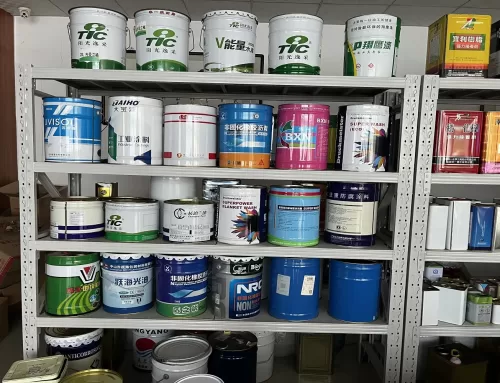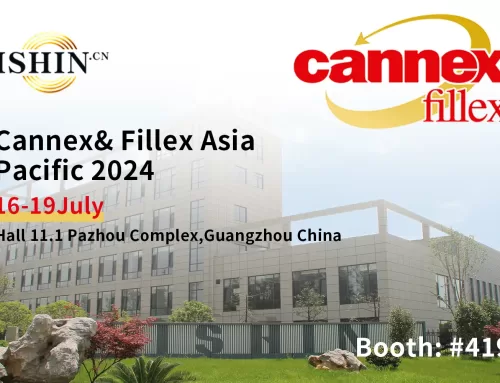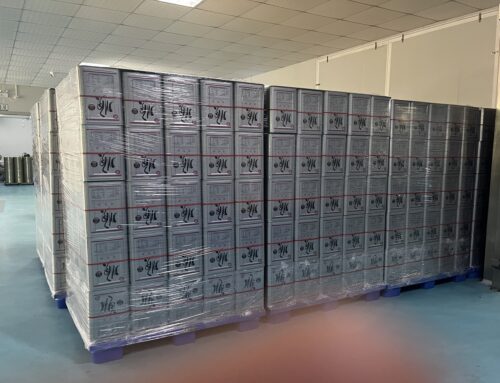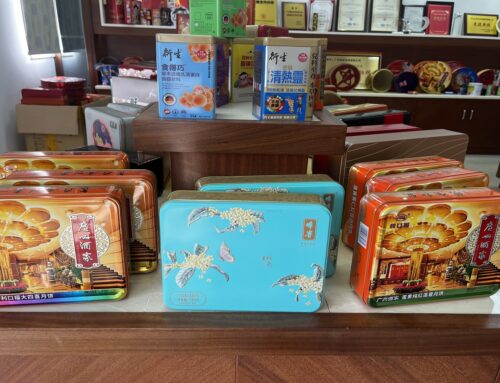1. The main factors affecting the quality of welds
Resistance welding uses the thermal effect of current, that is, when the current passes through two metal plates to be welded, they are melted due to the high heat generated by the resistance on the welding circuit, and combined by pressure and cooling. Welding resistance consists of two parts: the contact resistance between the metal plates and the bulk resistance of the metal plates themselves. Therefore, in order to obtain a good weld, the contact resistance should be reduced and the bulk resistance of the material should be increased.
To control the weld quality, the following five basic parameters should be adjusted: welding resistance, welding pressure, overlap amount, welding speed, and another variable factor-tinplate. These factors will determine the pitch of the weld, the degree of melting, the shape and microstructure of the weld. These parameters are related to each other. When a parameter changes, the welding conditions must be reset.
(1) The relationship between welding speed and welding current
When other conditions remain unchanged, in order to obtain a good weld, the set welding speed and welding current should make the iron sheet melt well and the weld joints are connected. When the welding speed increases, the current must be relatively increased. When the welding speed is too low, it is easy to cause the iron sheet to overheat. At this time, the cooling speed of the solder joint is slower than the shrinkage speed of the iron sheet, so a large hole will be formed at the welding joint. On the contrary, when the welding speed is too high, it is easy to form a phenomenon that the solder joints are not connected. And because the iron sheet is not heated enough, elongated holes or soldering are formed between the iron sheets.
(2) The relationship between welding pressure and welding current
The surface of the tinplate is a good conductive metal with low resistance, and the tin has a very low hardness and is easily deformed under pressure, which greatly reduces the welding surface resistance and is easy to weld. The welding current increases with the increase of welding pressure. The reason is that the higher the welding pressure, the larger the contact area of tinplate and the smaller the contact resistance on the surface. The current required for welding should increase accordingly. The welding pressure should be adjusted in an appropriate range. When the pressure is too low, the fillet formed by welding will be higher, which will bring difficulties in repainting; on the contrary, when the welding pressure is high. It is easy to get a flat weld.
(3) The relationship between overlap and welding current
A large amount of overlap requires more welding heat, and the welding current increases as the amount of overlap increases. Under the setting welding conditions, when the overlap amount is larger than the normal value, the area covered by the same welding pressure increases, resulting in a decrease in welding current density and a slight increase in contact resistance. As a result, the welding heat is insufficient and the cold welding is caused. on the other hand, the decrease in the amount of overlap will easily cause the phenomenon of over welding and extrusion.
(4) The charateristic of tin plate on welding
1. The amount of tin plating
The amount of tinplate has an impact on the quality of the weld. Althoughit is a good conductor,if the contact resistance of layer of tinplate is smaller, but if the amount of tin plating is too small (the amount of tin plating <0.5g/m2), the alloy layer is relatively high because the surface contact resistance of the alloy layer is large , It is not conductive to welding quality. Especially for the same batch of iron, but the alloy layer has a large variation range and the amount of alloy tin is too high, cold welding is likely to occur under the same set conditions. For tinplate with high tin plating, the solder joint pitch obtained at the same welding current is smaller than that with low tin plating. Therefore, to achieve a good weld, the welding speed must be reduced. In addition, if the welding current is too large, when the iron sheet is welded and melted, tin will infiltrate along the grain boundaries of the iron, which may cause transcrystalline corrosion for some foods after canning.
2. Thickness
The thickness of the tinplate has an influence on the adjustment of welding parameters, especially when welding with a high-speed. When the thickness of the tinplate increases, the welding current required is higher, and the upper and lower limits of the welding conditions also decrease as the iron sheet increases.
3. Hardness
The setting of the welding current is related to the hardness of the tinplate. When the hardness of the tinplate increases, the welding current should be reduced accordingly.
Under the setting welding conditions, the variation of the thickness and hardness of the tinplate within the normal range will not affect the welding. However, if the thickness and hardness of the same batch of iron vary greatly, the welding quality will be unstable, resulting in cold welding or over welding. For example, under the setting pressure, when the tinplate hardness increases too much, the surface contact resistance between the two plates increases, and the welding current should be reduced.
4. Steel base material
When the carbon content of the steel base is high, the welder current needs to be increased. In addition, if there are many inclusions in the steel base, spattering points are likely to occur due to the increase in resistance during welding.
In a word, when producing different types of empty cans, or when changing the type of tinplate. It is necessary to reset the new welding conditions.
Second, the main factors affecting the quality of the coating film
After welding, the original protective tin layer of the tinplate has been completely removed, and only the iron of the substrate is stored in this part. Therefore, it must be covered with a polymer organic coating film to avoid corrosion and discoloration of contents after filling with the contact between the iron and the contents.
(1) Paint type
coatings can be divided into liquid coatings and powder coatings. Various types of coatings have their own characteristics due to their different compositions and coating baking processes,the coating film formed also have their own characteristics.
1. Liquid paint
There are mainly epoxy phenolic, acrylic, polyester, organosol and pigmented coatings, etc. This type of coating is suitable for the weld r coating for most food and beverage cans.
Epoxy phenolic coating has few micropores, excellent chemical resistance and sterilization resistance, but it requires high request for baking heat. When the baking heat is insufficient and , it will be nadequate curing . After sterilization, the coating film will become white, which not only affects the coating performance, but also affect Food safety ; the flexibility and adhesion of the coating film will deteriorate when over-baking, making the coating film intolerant to mechanical processing and easy to crack.
Acrylic and polyester coatings have excellent adhesion, flexibility, chemical resistance, and sterilization resistance. However, acrylic coatings are easy to absorb the color of the content and are not very resistant to vulcanization.
The biggest feature of organosol coatings is the high solid content, the ability to form a thicker film on the weld, it is not easy to produce bubbles, and it has good coverage. It has excellent flexibility and resistance to mechanical processing. In addition, it baking heat request is lower than other coatings; but organosol coatings have poor permeability resistance and are easy to vulcanization corrosion, so they are not suitable for sulfur-containing foods.
Pigment-containing coatings are usually made by adding titanium dioxide or aluminum powder to organosol, epoxy or polyester coatings. The purpose is to mask the corrosion spots under the film, so it is suitable for welding of sulfur-containing foods such as luncheon meat cans’ welding. coating etc.
2. Powder coating
The powder coating can form a thick and complete coating film to provide the most complete protection for the weld. At the same time, the coating has no problems of solvent escape and environmental pollution during processing. It has been widely used in food and beverage cans with high corrosion resistance requirements.
Powder coatings can be divided into two types: thermoplastic coatings and thermosetting coatings. The main components of thermoplastic coatings are polyester powder, titanium dioxide, barium sulfate and so on. Its film formation is only a simple melting process, so when the full tank is baked after spraying, when the temperature reaches the melting point of the powder coating, the coating film will melt again. The coating is characterized by excellent flexibility and resistance to various mechanical processing; but its chemical resistance is worse than that of thermosetting coatings, and it is easy to absorb the color of food. Its adhesion to the original color is lower than that to the weld. Therefore, the shape of the coating is like the arch of a bridge. The main component of thermosetting coatings is epoxy/polyester, which is different from thermoplastic powder coatings. The pre-polymer resin is heated and cured into a film. The thickness of the coating film is thinner than that of thermoplastics. It has excellent chemical resistance, but its processability is not as good as thermoplastic coatings. .
(2) coating film thickness
The protective characteristic of the coating film is related to its pore size. The number of micropores of the same type decreases with the increase of the film thickness. For liquid coatings, the thickness of the coating film depends on the solid content (viscosity) and coating amount during construction.
1. Viscosity
The same liquid coating, the higher the viscosity, the higher the solid content, and the better the coverage of the weld. However, the thickness of the coating film requires a long baking time. If the thickness of the coating film is increased per micron, the baking time needs to be increased by 1 second. At the same time, the coating film with high viscosity is easy to produce bubbles during baking, which will affect the micropores of the coating film; on the contrary, when the coating viscosity is low, the coating film is thin and has many micropores and poor protection performance. Therefore, it is necessary to adjust the appropriate construction viscosity to make the coating film have an appropriate thickness, and at the same time prevent the overspray and splash caused by the excessively low or excessively high viscosity, resulting in insufficient baking and curing.
2. Coating amount
In order to obtain a suitable coating film thickness, the coating amount should be controlled. In addition to adjusting the construction viscosity of the coating, attention should be paid to selecting the appropriate nozzle model, adjusting the pressure of the coating pump and the temperature of the coating when spraying. When the roller coating method is adopted, the coating wheels with different surface curves and the adjustment scraper can be selected to control.
Liquid coatings can never form a thick film in the areas where the weld seam needs the most protection, generally only 4-10 microns. This is due to the surface tension effect of the coating. Due to viscosity changes during baking, the paint will flow away from the edge of the weld (fillet) to both sides. The surface of differernt type coating.There is a difference in tension effect. The viscosity of organosol coatings will always increase with the increase of temperature, so it is not easy to cause poor coverage at the edge of the weld. With the increase of temperature, the viscosity of epoxy phenolic coatings first decreases, and then It rises straight again, so when the viscosity drops to the lowest point, the coating will flow to both sides, making the coating film thickness at the edge of the weld much lower than that on both sides.
The film thickness of powder coatings is much thicker than that of liquid coatings. Thermoplastic powder coatings should generally not be less than 40 microns, because only when the thickness of the coating film is greater than 40 microns, the number of micropores drop significantly, but when it is higher than 60 microns The mechanical properties will be worse, and the coating film will be easily broken during processing. The thermosetting powder coating has good compactness, and the thickness of the coating film is generally controlled at 20-60 microns. In addition to the thickness of the film porosity of the coating, it is also related to its density. Controlling the diameter distribution of powder particles can control the thickness and density of the coating film.
(3)Coating film integrity
1. Weld quality
The integrity of the liquid coating film depends largely on the geometry of the weld. For example, the weld has splash points or severe extrusion, and the surface is not smooth. It is impossible to completely cover it with liquid paint; in addition, the thickness of the weld also effect the coating film. If The welding is thicker ,the seam is not easy to cover. Generally, the thickness of the welding seam should be less than 1.5 times the thickness of the plate. For the second cold-rolled iron or iron with high hardness, the thickness of the welding seam is 1.5 to 1.8 times the thickness of the plate. .
Welds made without nitrogen protection will cause poor adhesion of the coating film after the oxide layer, which will cause the coating film to rupture during subsequent flanging, necking, and rolling, which will affect the integrity of the coating film .
Due to the sufficient thickness of powder coating, it can perfectly solve the problem of metal exposure caused by weld defects and provide excellent protection for the weld.
2. Bubble
The unreasonable solvent formulation of the liquid coating will affect the integrity of the coating film. When the liquid coating contains a lot of low-boiling solvents, or the temperature rises too fast during baking, or the welding seam temperature is too high, a large amount of solvent volatilizes during baking, leaving strings of bubbles or micropores in the coating film. This leads to poor coverage and reduces the protective effect of the repair coating on the weld.
(4) Baking and curing
1. the curing process of the coating
The baking and curing of liquid coatings can be roughly divided into the following stages: the coating is first leverl wetted and the empty parts (about 1 to 2 seconds), and then the solvent evaporates to form a gel (should be within 3~ Complete within 5 seconds, otherwise the paint will flow away from the weld), and finally polymerization. The paint must reach the required total heat. It has a great influence on the thickness and characteristic of the coat film. As mentioned earlier, if the bake temperature rises too quickly, bubbles are likely to occur, and if the temperature rises too slow, the peak temperature maintenance time is too short and will cause insufficient curing.
Various coatings have different peak times during baking. Epoxy phenolic coatings take longer than organosols, that is, more heat is required for baking.
The thermoplastic coating in the powder coating is simply melted to form a film during baking, and it has no polymerization reaction; while the thermosetting coating needs to undergo addition polymerization and crosslinking into a polymer compound after prepolymerization without melting, so the baking heat and supplement The characteristic of the coating film is closely related.
2. The effect of curing degree on coating film performance
coatings can show their characteristics only when they are fully baked and cured. Insufficient baking results in many micropores in the coating film, and poor processing resistance. For example, if the thermoplastic powder coating is not baked well, the coating film tends to wrinkle when flanging. Excessive baking will affect adhesion. For example, if epoxy phenolic paint is over-baked, the coating film will be scorched and brittle, and it will easily cause cracking of the coating film at flanging, necking, and rolling. In addition, sufficient cooling after baking also has an important effect on the performance of the coating film. If the thermoplastic powder coating is not quickly cooled to room temperature after the coating is baked, the coating film is likely to crack during flanging. If a cooling device can be added after the oven, the problem of flanging and cracking of the coating film can be avoided.
In one word, in order to ensure the quality of the coating film, that is, less porosity and good processing resistance, the thickness and curing degree of the film must be controlled.




